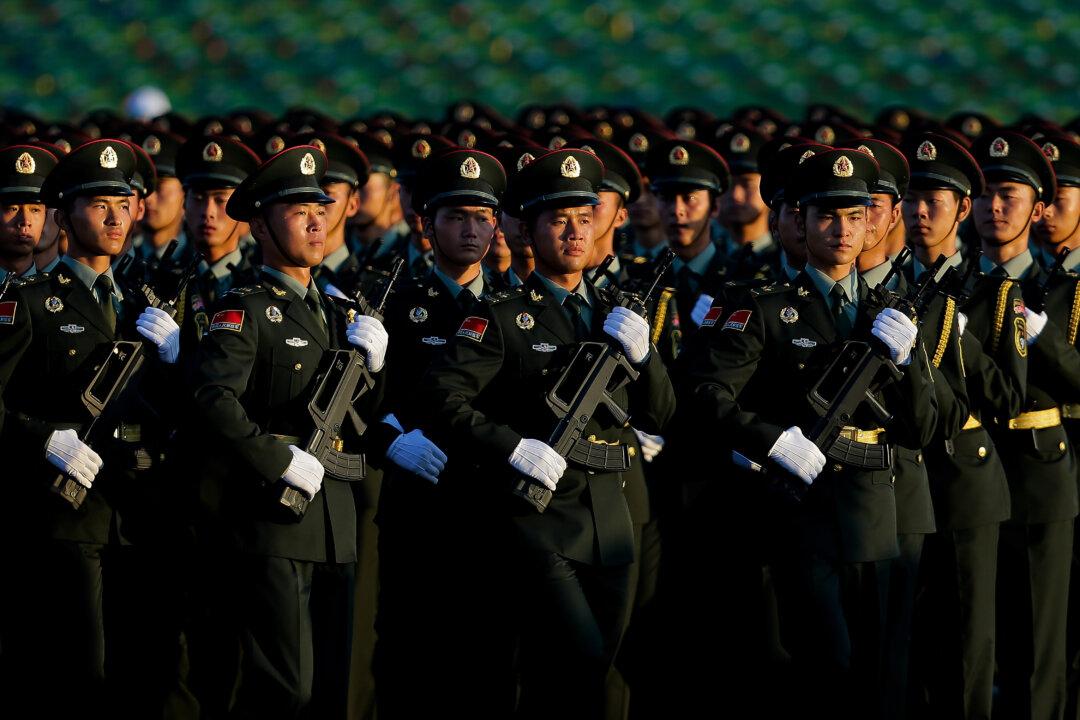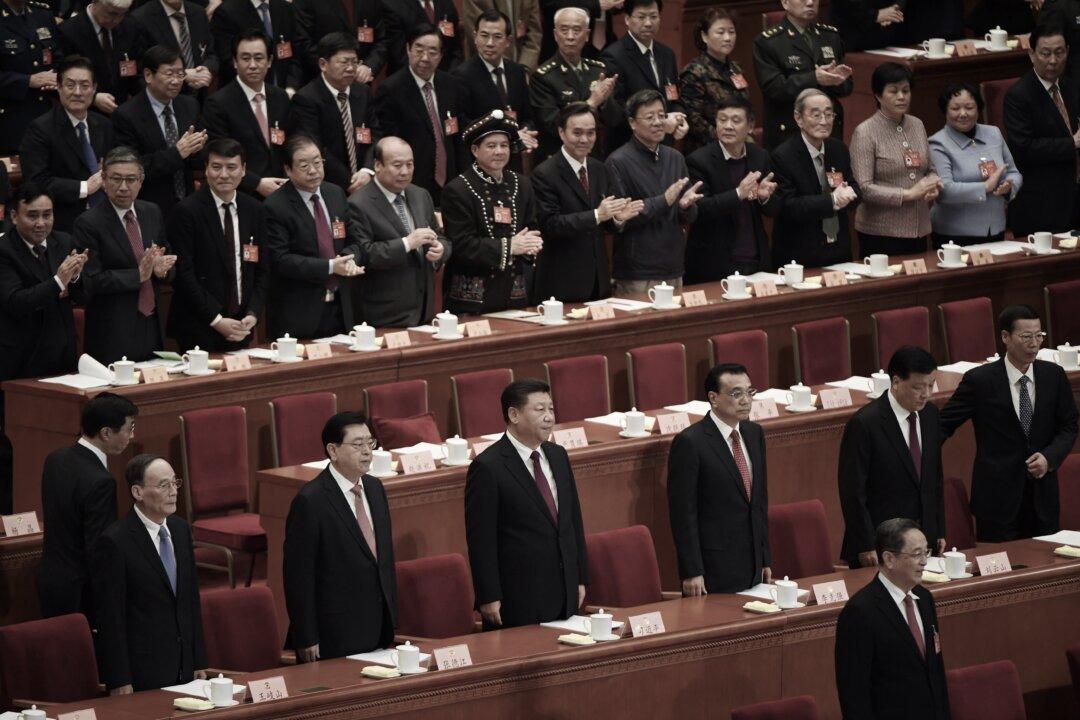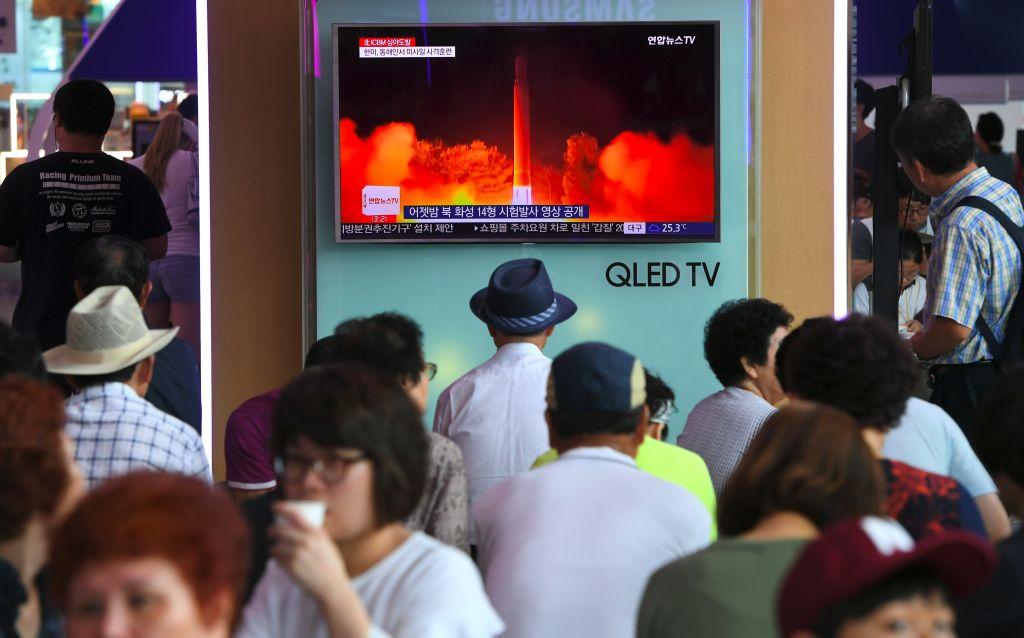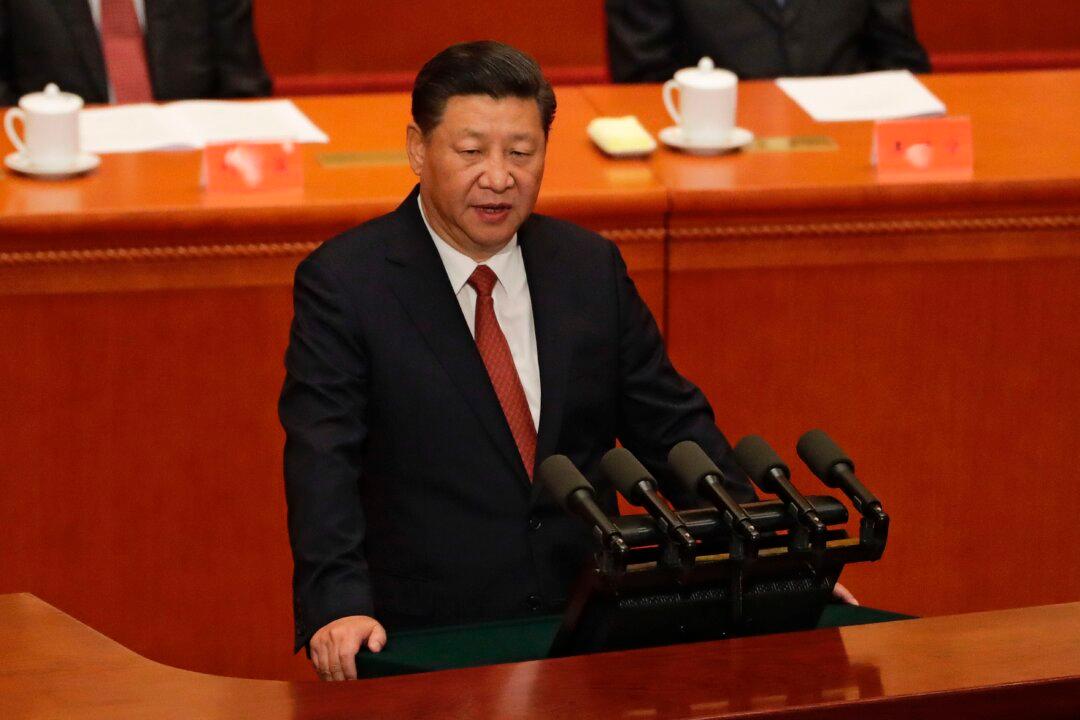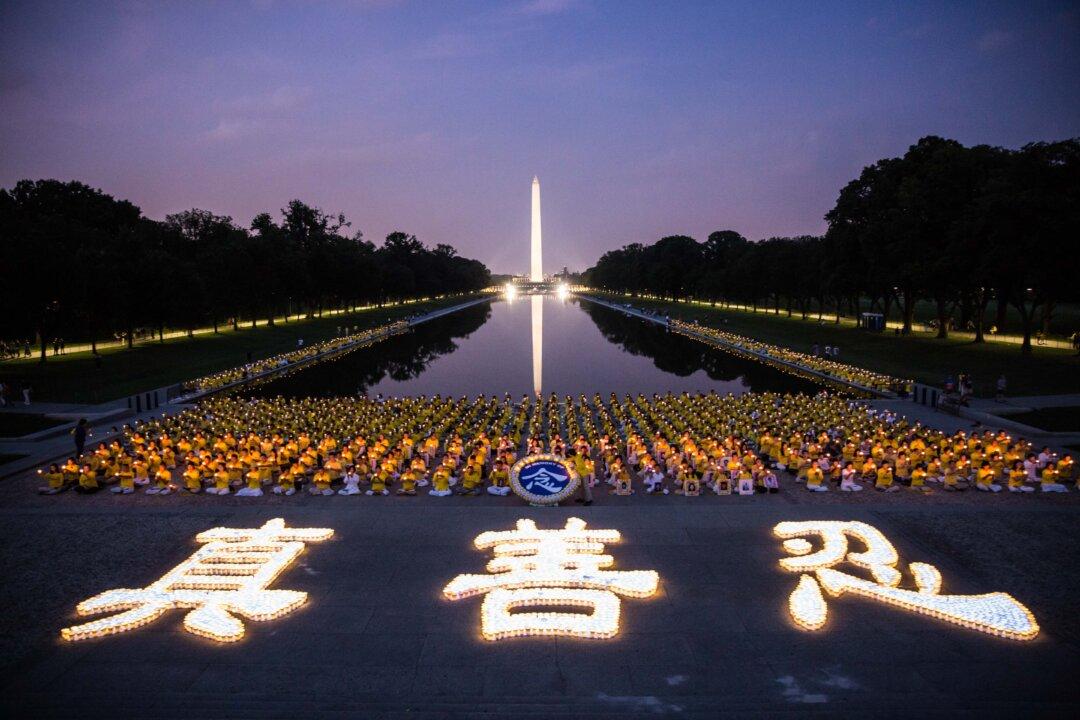In the dead of the night, a military airstrip in eastern China is attacked. In an unlit war room, a fist slams down resolutely upon the table.
As day breaks, the People’s Liberation Army rolls out troop carriers, armored vehicles, submarines, and the latest fighter jets to assault an island off China’s east coast.
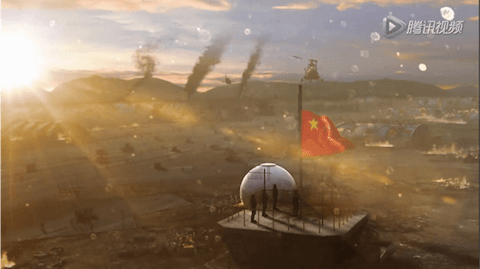
The People's Republic of China's flag is raised in a scene from "Island Battle," an animated clip by Chinese Internet giant Tencent. Screen shot viaTencent
